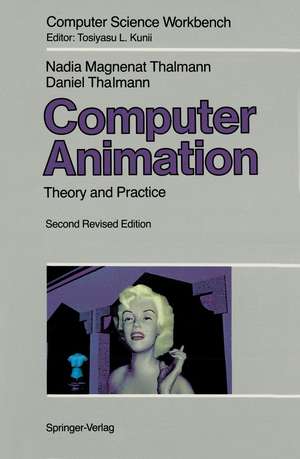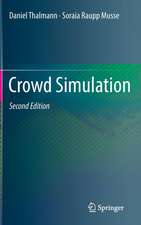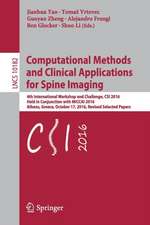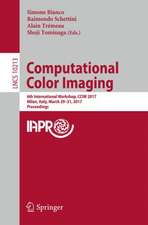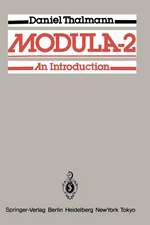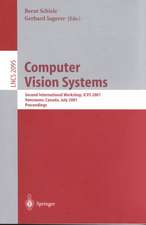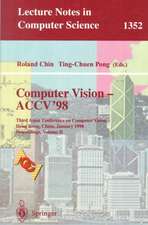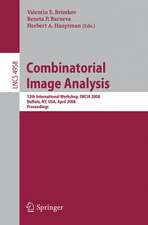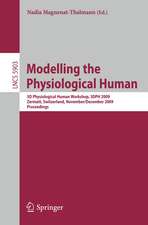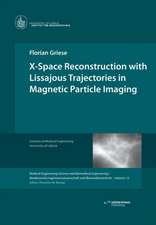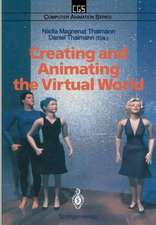Computer Animation: Theory and Practice: Computer Science Workbench
Autor Nadia Magnenat-Thalmann, Daniel Thalmannen Limba Engleză Paperback – 3 ian 2012
Preț: 332.71 lei
Preț vechi: 415.89 lei
-20% Nou
Puncte Express: 499
Preț estimativ în valută:
63.67€ • 66.23$ • 52.56£
63.67€ • 66.23$ • 52.56£
Carte tipărită la comandă
Livrare economică 15-29 aprilie
Preluare comenzi: 021 569.72.76
Specificații
ISBN-13: 9784431681076
ISBN-10: 4431681078
Pagini: 264
Ilustrații: XIII, 245 p.
Dimensiuni: 170 x 244 x 14 mm
Greutate: 0.43 kg
Ediția:2nd ed. 1990. Softcover reprint of the original 2nd ed. 1990
Editura: Springer
Colecția Springer
Seria Computer Science Workbench
Locul publicării:Tokyo, Japan
ISBN-10: 4431681078
Pagini: 264
Ilustrații: XIII, 245 p.
Dimensiuni: 170 x 244 x 14 mm
Greutate: 0.43 kg
Ediția:2nd ed. 1990. Softcover reprint of the original 2nd ed. 1990
Editura: Springer
Colecția Springer
Seria Computer Science Workbench
Locul publicării:Tokyo, Japan
Public țintă
ResearchCuprins
1. Introduction.- 2. Conventional Animation.- 2.1 Basic Principles of Conventional Animation.- 2.2 How Are Cartoon Animated Films Made?.- 2.3 Multiplane and Shooting Phase.- 2.4 Some Techniques and Special Camera Effects.- 2.5 Bar, Route, Model, and Exposure Sheets.- 2.6 Postproduction.- 2.7 Historical Background.- 2.8 Applications of Animation.- 3. Computer Animation.- 3.1 The Role of the Computer in Animation.- 3.2 How to Classify Computer Animation Systems?.- 3.3 Real-time vs Frame-by-frame.- 3.4 Frame Buffer Animation and Real-time Playback.- 3.5 Systems vs Languages.- 4. The Development of Computer Animation in Various Organizations.- 4.1 The Early Systems: BEFLIX and EXPLOR.- 4.2 Picture-driven Animation: GENESYS.- 4.3 Analog Systems: SCANIMATE and CAESAR.- 4.4 ANIMATOR, ARTÄ, and MOP.- 4.5 Computer Animation at the National Research Council of Canada.- 4.6 Computer Animation at Ohio State University.- 4.7 From GRASS to ZGRASS.- 4.8 New York Institute of Technology, Lucasfilm, and Pixar.- 4.9 MAGI/Synthavision, Robert Abel, Triple I, and Digital Effects.- 4.10 And the Others?.- 5. Keyframe and Painting Systems.- 5.1 Computer-assisted Animation.- 5.2 The Input of Drawings.- 5.3 In-between Calculations.- 5.4 The Laws of Animation.- 5.5 Skeleton Techniques.- 5.6 The Path of Motion and P-curves.- 5.7 In-betweening Using Moving Point Constraints.- 5.8 Coloring Techniques.- 5.9 Paint Systems.- 5.10 Color Simulation and Dithering.- 5.11 Gradation Techniques.- 6. Object Modeling in 3D Animation.- 6.1 What Is 3D Animation?.- 6.2 Object Representation.- 6.3 Surface Modeling.- 6.4 Object Creation.- 7. Motion Control in 3D Animation.- 7.1 A Classification of 3D Computer Animation Methods.- 7.2 A Unified View.- 7.3 A Comparison of Methods.- 7.4 Three-dimensional ShapeInterpolation.- 7.5 A Case Study: The Multiple Track Animator System.- 7.6 Parametric Keyframe Animation.- 7.7 The Use of Splines in Keyframe Animation.- 7.8 Principles of Algorithmic Animation.- 7.9 Motion Specification will Synchronization.- 8. Hidden Surfaces, Reflectance, and Shading.- 8.1 Hidden Surfaces.- 8.2 Light Reflection Models.- 8.3 Surface Shading.- 8.4 Rendering of Parametric and Patch Surfaces.- 8.5 Complex Light Sources.- 9. Transparency, Texture, Shadows, and Anti-aliasing.- 9.1 Ray-tracing Algorithms.- 9.2 Ray-tracing Problems.- 9.3 Optimization Techniques for Ray-tracing.- 9.4 Transparency.- 9.5 Texture.- 9.6 Fractals.- 9.7 Fuzzy Objects Modeling and Particle Systems.- 9.8 Shadows.- 9.9 Spatial Anti-aliasing.- 9.10 Motion Blur and Temporal Anti-aliasing.- 10. Human Modeling and Animation.- 10.1 Stick, Surface, and Volume Models.- 10.2 The NUDES System.- 10.3 The Badler Bubbleman.- 10.4 Labanotation.- 10.5 Parametric Keyframe Animation of Articulated Bodies.- 10.6 Body Deformations and JLD Operators.- 10.7 Hand Animation.- 10.8 Facial Animation.- 10.9 A Three-level Approach Based on Abstract Muscles.- 11. Object-oriented and Actor Languages and Systems.- 11.1 Classes, Modules, and Processes.- 11.2 Kay’s Work and SMALLTALK.- 11.3 Hewitt’s Actor Theory.- 11.4 LOGO and the DIRECTOR Actor-based Animation Language.- 11.5 AS AS: The Actor/Scriptor Animation System.- 11.6 CINEMIRA: A Language Based on Actor and Camera Data Types.- 11.7 MÏRANIM: An Extensible Director-oriented 3D Animation System.- 12. Automatic Motion Control.- 12.1 Mechanics, Robotics, and A.I. in Computer Animation.- 12.2 First Step: Positional Constraints and Inverse Kinematics.- 12.3 Second Step: Motion Control Using Dynamics.- 12.4 Third Step: Impact of the Environment.- 12.5Fourth Step: Task Planning.- 12.6 Fifth Step: Behavioral Animation.- 13. Case Studies of Computer-generated Films.- 13.1 The Film Dream Flight.- 13.2 The Film Rendez-vous à Montréal.- 13.3 The Film Eglantine.- 13.4 The Film Galaxy Sweetheart.- References.- Appendix: Computer-generated Films.
